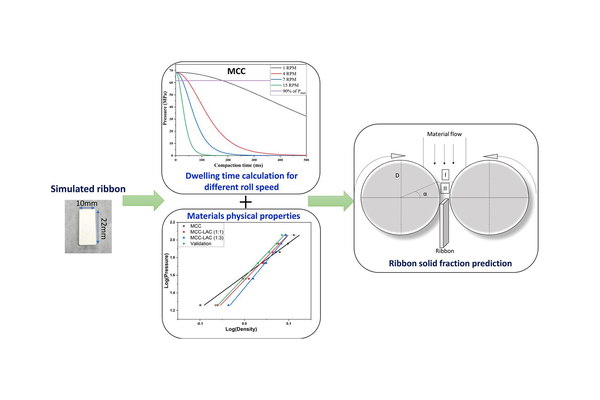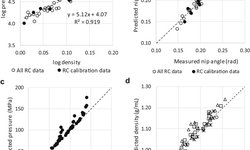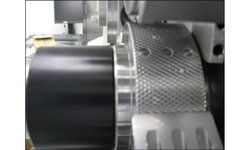Scientific papers
This research explores the modeling of the pharmaceutical roller compaction process, emphasizing the use of the Johanson model and the effects of varying roll speeds between 1 and 15 RPM on the predictive accuracy of ribbon solid fraction. The traditional Johanson model was enhanced by incorporating a dwell time parameter, resulting in a floating correction factor that varies with roll speed. By systematically analyzing how different roll speeds affect the solid fraction of ribbons made from microcrystalline cellulose, lactose, and their blends, it was discovered that the necessary correction to the Johanson model is influenced by both roll speed and formulation composition. Interestingly, the correction factor showed a strong correlation with the blend’s mechanical properties, specifically yield stress (Py) and elastic modulus (E0), which reflect the powder's deformability. Validated with a multicomponent drug formulation, showing differences of ±0.4–1.3%, the findings highlight the usefulness of this modified mechanistic approach for accurately predicting ribbon solid fraction when Py or E0 values for a given blend are known. Consequently, this work advances the field by providing early insights for achieving more accurate and controllable roller compaction operations in late-stage pharmaceutical manufacturing.

Comments
No comments posted yet.
Add a comment















